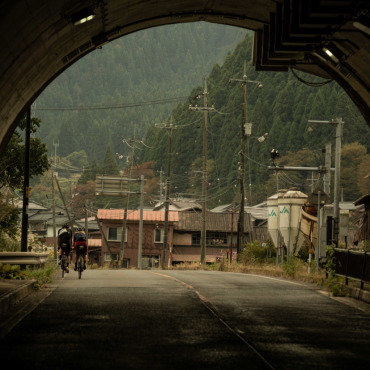
2015, aiming for July 18th.
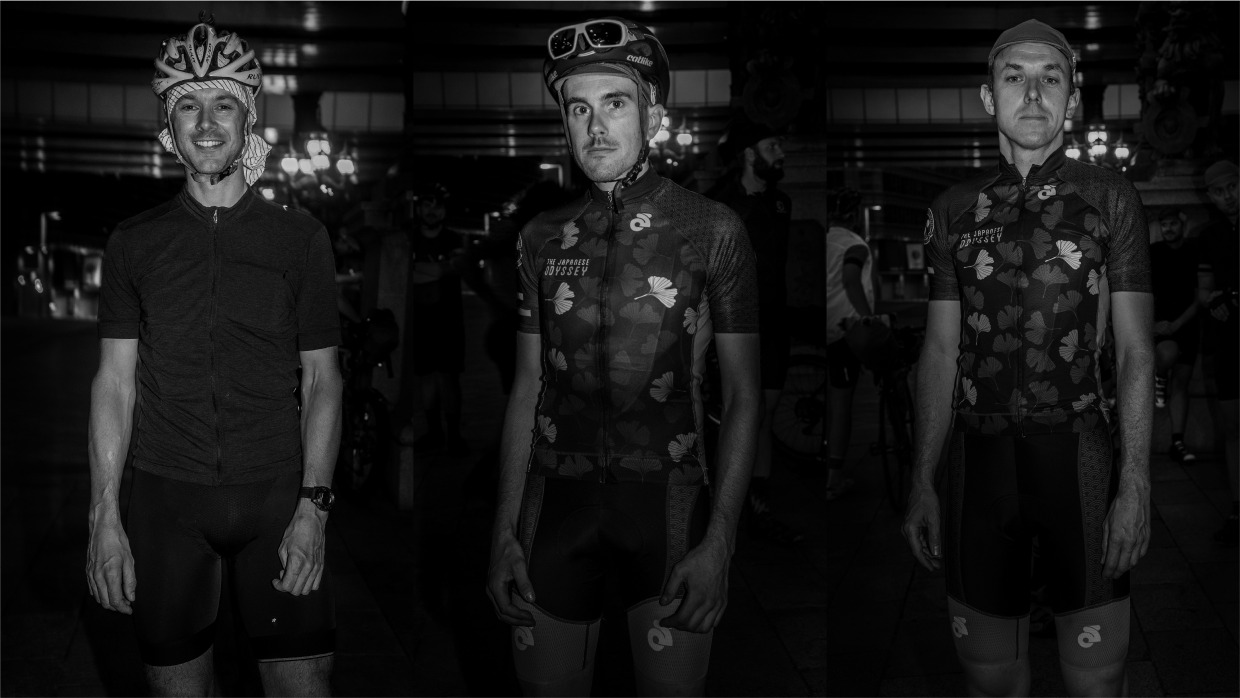
The second installment of The Japanese Odyssey (TJO), scheduled for autumn 2025, dives into the riding philosophies and gear preferences of the fastest rider from the 2016 event and the two organizers from France. If you’re intrigued by the challenge of ultra-long-distance cycling, this is a must-read! Take inspiration from their bikepacking setups and consider joining the adventure yourself.
For detailed schedules and routes for this year, please visit the official website (as of January 2025, these are yet to be announced).
*You can find the previous essay here.
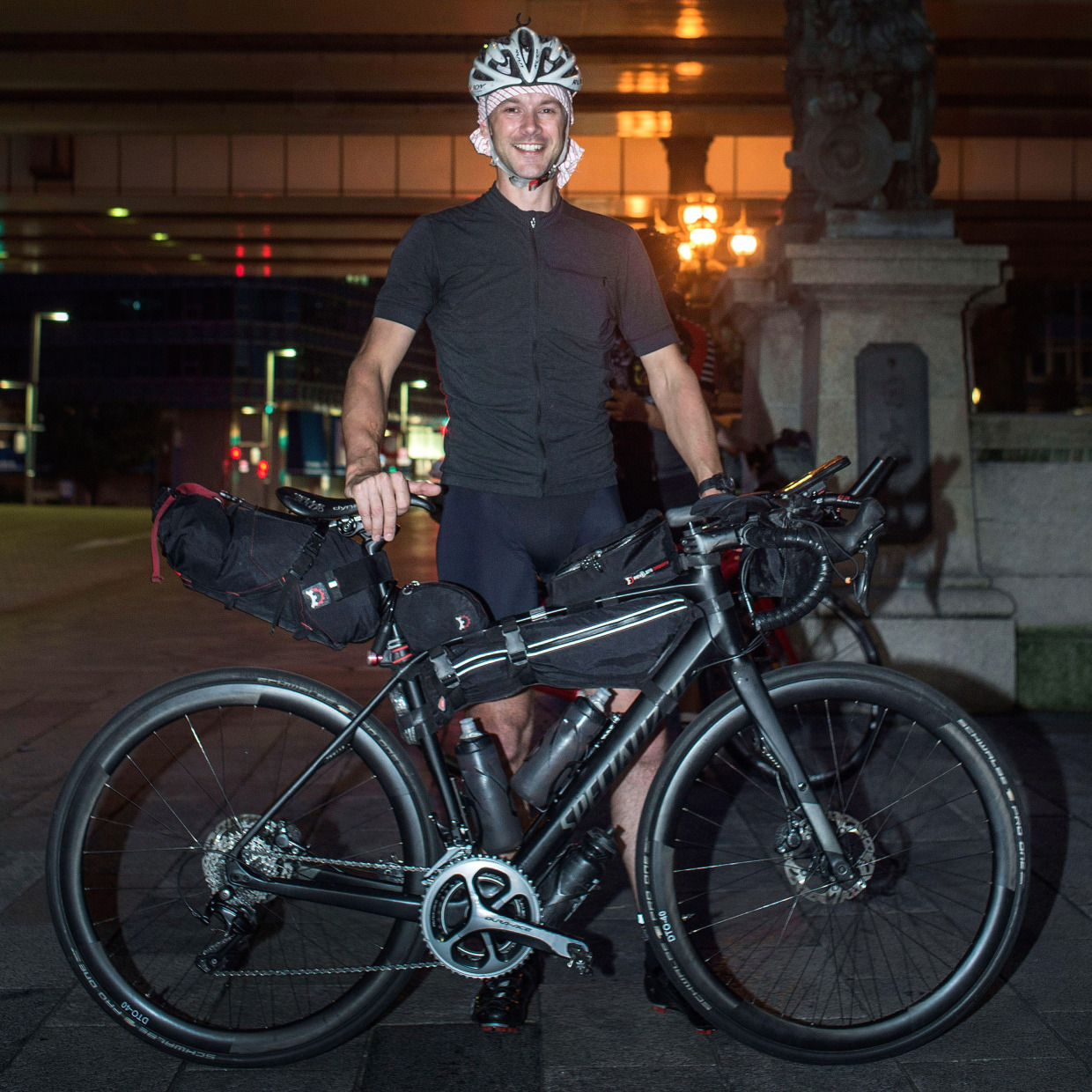
Before the start, he was the first to arrive at Nihonbashi early in the morning, and from there, he completed the 2016 TJO in just 10 days, reaching the finish line in Dotonbori. The pole-to-win rider was Tom, a British cyclist who clocked the fastest pace that year, averaging over 300 km per day according to GPS data. Based in South London, he is an Audax rider affiliated with a local randonneuring, regularly covering 200–300 km on weekends.
With his bright smile and straightforward manner, Tom shared his impressions of riding in Japan. Surprisingly, his enthusiasm leaned heavily toward Japan’s industrial and engineering marvels. “The bridges, roads, and tunnels were amazing—they blended beautifully with the natural scenery. The construction methods were fascinating too. On another note, Japan’s home electronics are fantastic. Beyond the scenery, Japan’s technical prowess really stood out,” he explained. As a full-time electrical engineer, his perspective made perfect sense. The TJO route crosses numerous rivers, delves deep into mountain ranges, and passes by critical infrastructure like dams and bridges, showcasing the essence of Japan’s civil engineering. For those who appreciate structures, topography, and history, the TJO is a cyclist’s version of a Buratamori (A Japanese TV show where comedian Tamori explores the history of local regions) adventure. It’s no wonder Tom found himself captivated by these aspects of the journey.
His beloved bike was a full-carbon disc road model of the ambitious gravel bike, the Specialized Diverge. With thru-axle specifications praised for exceptional stability during rides, the bike was outfitted with carbon clincher wheels. Toward the final stages of the race, he encountered some issues with the dynamo hub on the front wheel, which developed some play, but other than that, he experienced no major mechanical troubles and completed the course safely—and at record speed.
In 2016, ultra-race setups were still in a trial-and-error phase for many riders. However, Tom’s bike was already equipped with features that have since become the gold standard for ultra-distance cycling setups, such as a dynamo hub with a USB port, high-powered lights, and GPS devices. Remarkably, these elements remain practical essentials even in 2024. Yet, Tom candidly admitted, “I only use these electrical gadgets out of necessity. Honestly, I prefer riding without them.” An interesting stance, especially for an electrical engineer.
As for his bags, he opted for Revelate Designs, which at the time stood shoulder-to-shoulder with Apidura as one of the top choices in bikepacking gear.
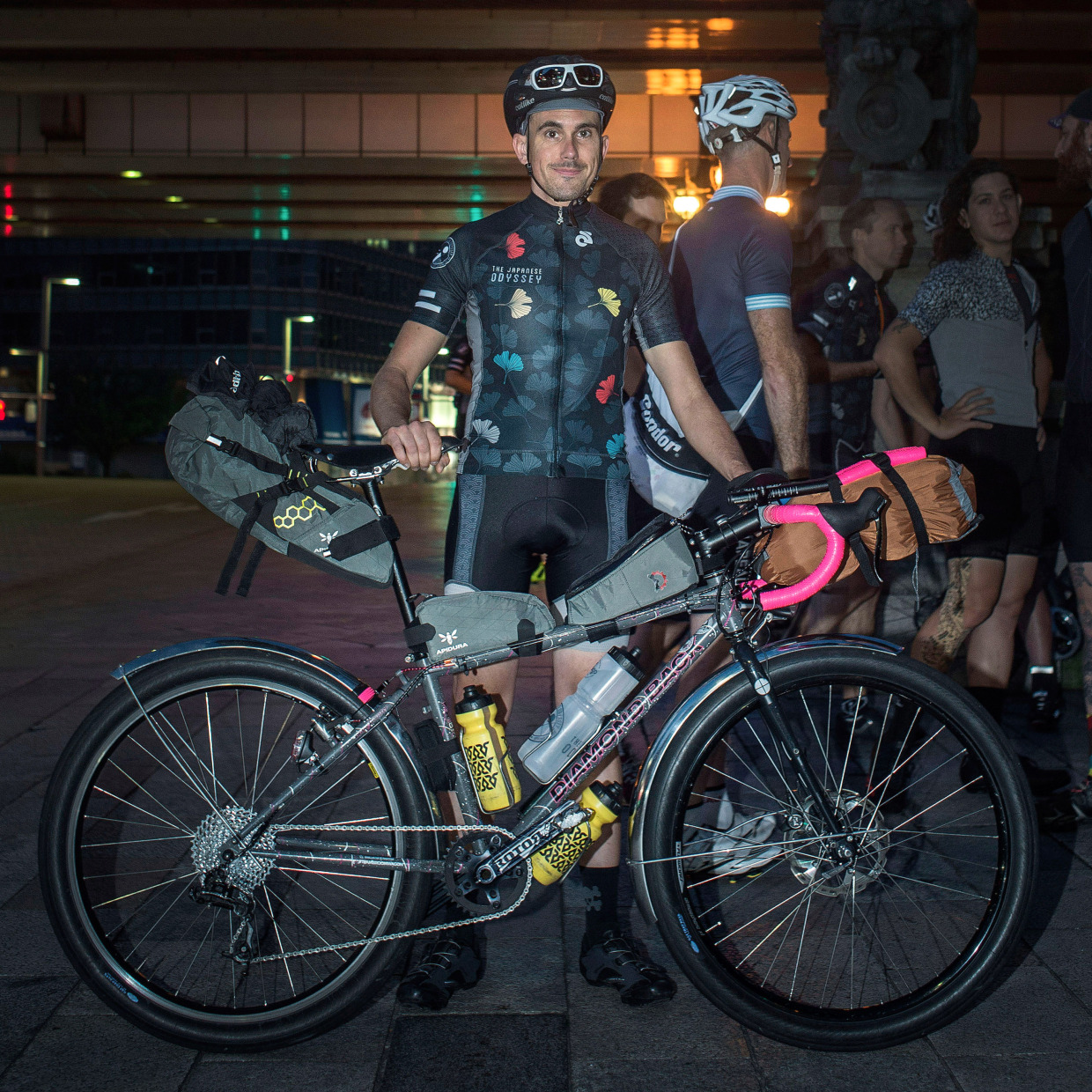
The Japanese Odyssey_Organizers no.2
The Ascetic Bike Addict / GUILLAUME SCHAEFFER(France)
Guillaume was born and raised in Strasbourg, a city in eastern France near the German border. After spending time in the bustling metropolis of Paris working as a designer, he eventually returned to his hometown, where he now plays a key role at his mentor and partner Emmanuel’s messenger company. Alongside Emmanuel, the originator of the Japanese Odyssey (TJO) concept, Guillaume serves as the event’s behind-the-scenes co-organizer, embodying a true two-person team effort.
While Emmanuel is a free-spirited genius, Guillaume takes charge of the finer details, including practical logistics and all aspects of official design. Despite being shy and reserved, Guillaume handles critical tasks such as sharing updates on social media, checking on participants’ safety, and managing a multitude of behind-the-scenes operations. These seemingly small yet essential responsibilities make him an indispensable part of the TJO’s success.
Guillaume leads a disciplined life—he’s a vegetarian, doesn’t smoke, and embraces a lifestyle of restraint. However, when it comes to cycling, he’s easily the most passionate enthusiast among the participants. His highly distinctive, meticulously customized bike speaks volumes about his obsession. Over time, he carefully gathered his favorite components to assemble the perfect setup for his second Japanese Odyssey (TJO).
Reflecting on the challenges he faced in the previous year, Guillaume made several strategic upgrades: switching the front wheel to a disc brake system, opting for a single-chainring drivetrain with a larger gear range, adding mudguards, and prioritizing comfort with ultra-wide tires. The centerpiece of his bike is a nostalgic nod to the past—a 1990s Diamond Back steel mountain bike frame, built from heavy chromoly steel (a detail he laughs about). Guillaume’s shy and reserved nature is beautifully offset by the expressive storytelling of his bike, an excellent example of how actions—or in this case, craftsmanship—can speak louder than words.
As for his attire, Guillaume sports the original jersey from the 2016 Japanese Odyssey. Designed by Guillaume himself, the jersey captures the essence of autumn in Japan, featuring a motif of ginkgo leaves, a symbol that left a lasting impression during the inaugural TJO. The design blends Japanese aesthetics with a touch of French artistry. Sponsored by CHAMPION SYSTEM, the jersey was provided to all participants as a badge of honor.
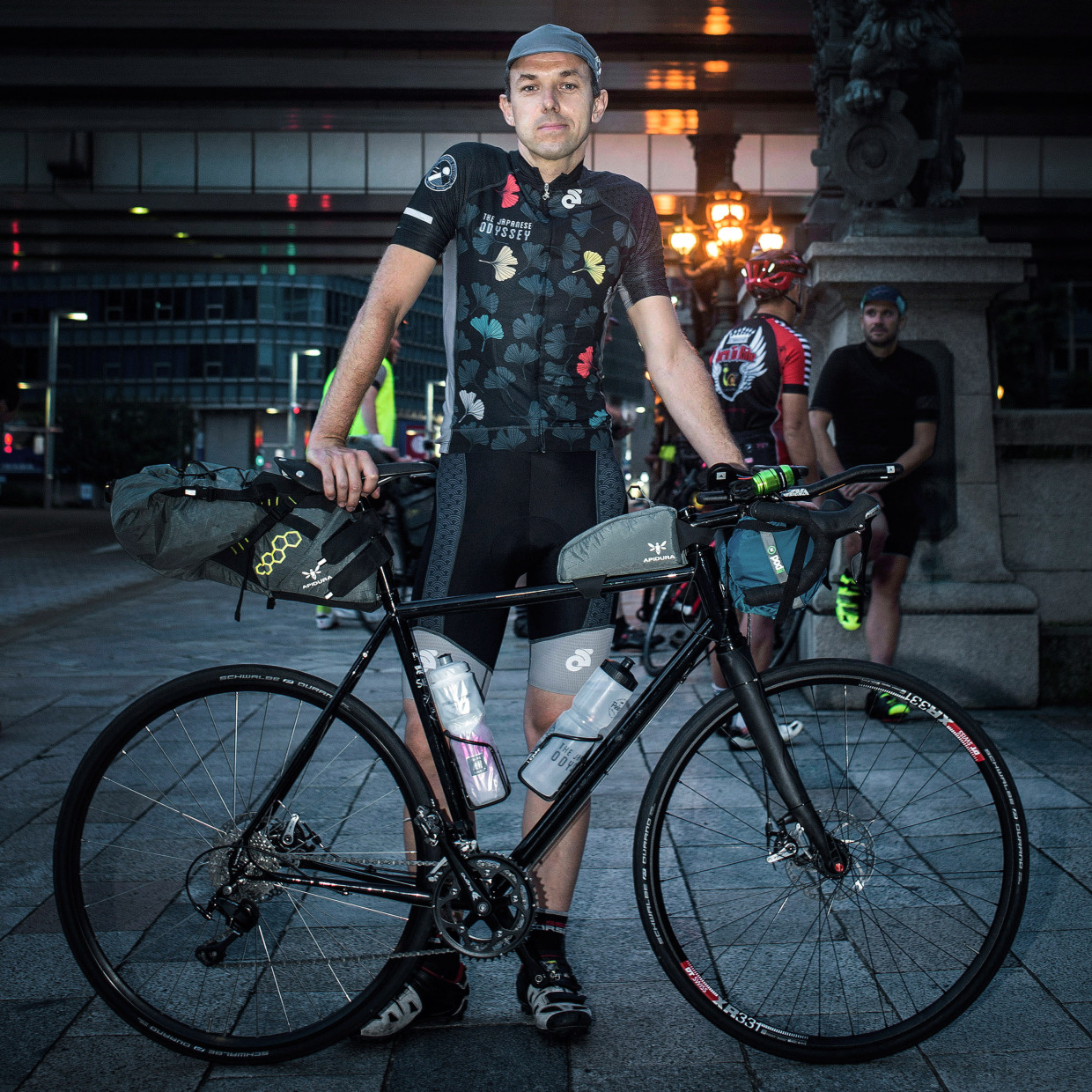
The Japanese Odyssey_Organizers no.1
The “Harukist*” Route Maker / EMMANUEL BASTIAN(France)
*A “Harukist” refers to someone who is a devoted admirer of the author Haruki Murakami.
Hailing from Strasbourg, a city near the German border east of Paris, Emmanuel is the lead organizer of The Japanese Odyssey (TJO) and a well-known figure in the world of cycle messengers. Growing up in a region steeped in the rich traditions of French cycling, Emmanuel developed a deep passion for bicycles at a young age.
Over the years, he immersed himself in the evolving culture of cycle messengers and the burgeoning ultradistance movement. Inspired by these experiences and his long-held dream of traveling to Japan, Emmanuel conceived the bold idea of combining his love for ultradistance cycling with an exploration of Japan, giving birth to the extraordinary event now known as The Japanese Odyssey.
That said, the organizing team consists of just two people—Emmanuel and Guillaume. With minimal promotion, the inaugural event had only four participants (including the two organizers). However, riding the wave of the ultradistance movement, the 2016 edition saw 21 participants. By the time of the Tokyo 2020 tourism boom, over 100 entries had been received—only for the event to be heartbreakingly disrupted by the COVID-19 pandemic. They declared that year a “blank slate” and devoted their energy to preparation. When The Japanese Odyssey made its comeback in 2023, it drew over 80 entries. Compared to the humble beginnings, the event grew twentyfold over eight years.
While the numbers may seem modest, the growth reflects Emmanuel’s passion and the unwavering support of the global cycling community, which forms a grassroots network of solid connections. Both Emmanuel and Guillaume remain humble and grounded, resisting commercialism—a quality that has earned them widespread trust. They understand that ultradistance cycling is rooted in the traditions of French brevets, characterized by genuine amateurism and a spirit of volunteerism.
Many repeat participants openly praise Emmanuel’s genius for route-making. Those who join the event get to experience his craft firsthand—but completing the course requires covering approximately 2,000 kilometers.
When asked, “Why Japan?” Emmanuel often playfully deflects. However, he has shared that his love for Japanese literature—haiku by Bashō, the novels of Haruki Murakami, and similar works—fueled his dream of visiting and cycling through Japan. This blend of literature and cycling, with its romantic undertones, is quintessentially French and captivating.
A look through the event’s official website reveals themes inspired by Bashō’s The Narrow Road to the Deep North. The language used in the content combines Japanese literary influences with French flair, creating a unique and poetic tone. Although the website is in English, it’s worth reading to appreciate its distinctive charm.
Text&Photo_ Eigo Shimojo
Next time, we will introduce three more crazy rider, too. Stay tuned!
Overview of the 2016 TJO:
Theme: Japan’s Top 100 Mountains (Mt. Haruna, Mt. Norikura, Mt. Tsurugi, Tengu Highlands, Mt. Sasayama)
Route Overview: Nihonbashi/Tokyo → Gunma Prefecture → Nagano Prefecture → Nara Prefecture, Mie Prefecture → Sanin Region → Tokushima Prefecture, Ehime Prefecture, Kochi Prefecture → Dotonbori/Osaka
Distance: Approximately 2,400 km
Total Elevation Gain: Approximately 3,500 km
🚴♂️The Japanese Odyssey Report Series
Second series
#01 Before Dawn
#02 The wave has arrived.
#03 “Be prepared”
#04 Moving Dots in Motion
#05 CARLOS / DAVID / PASCAL
#06 TOM / GUILLAUME / EMMANUEL
First series
#01 Into the World of Ultra-Distance
#02 2015, aiming for July 18th.
#03 Toward The First Year of My “The Japanese Odyssey”
#04 A crazy setup.
#05 The mastermind behind the “mystery”
#06 “Japan favoritism” or “Bias towards Japan”
🚴♂️The Japanese Odyssey Official Website
https://www.japanese-odyssey.com/
Profile
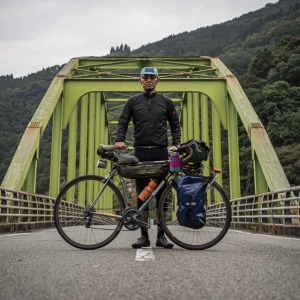
Eigo Shimojo
Born in Nagano Prefecture in 1974
Belongs to IPU Japan Photographers Union
He became independent in 2000 as a freelancer and established Greenhouse Studio, which handles a wide range of photography and video production.
His life’s work is pursuing underground HIPHOP and bicycle culture around the world.
Post Date:2025.01.24